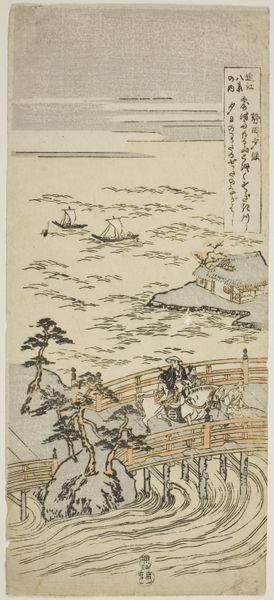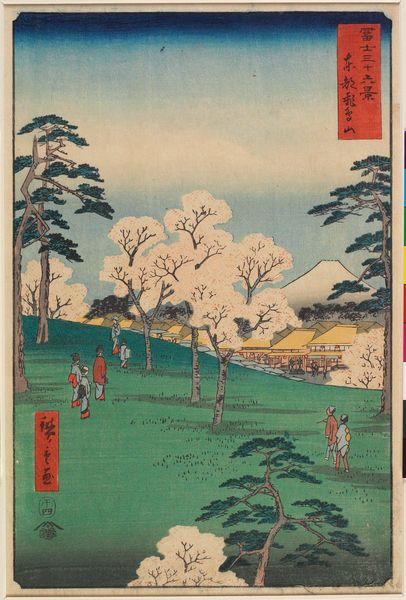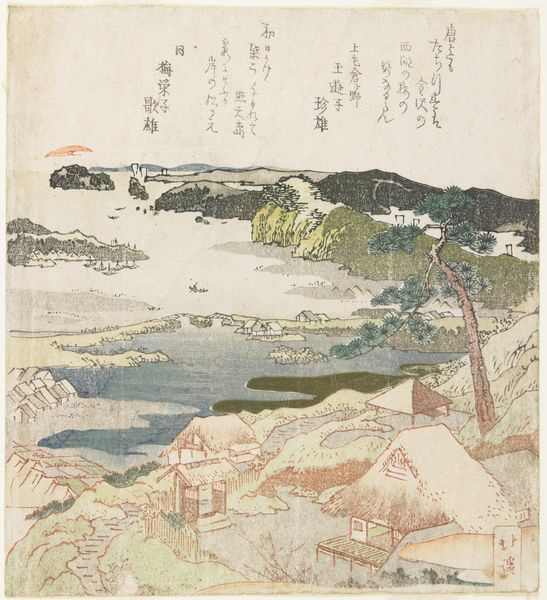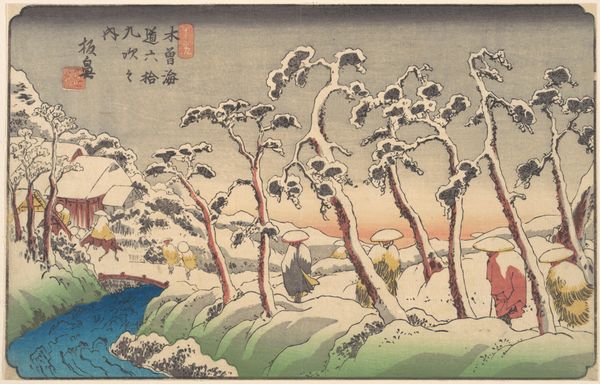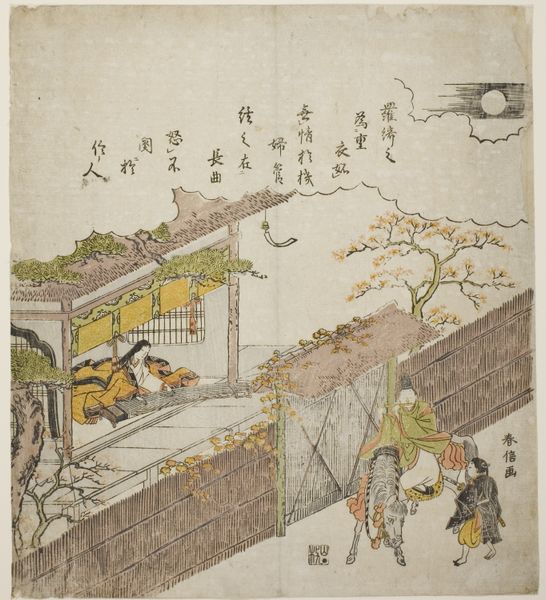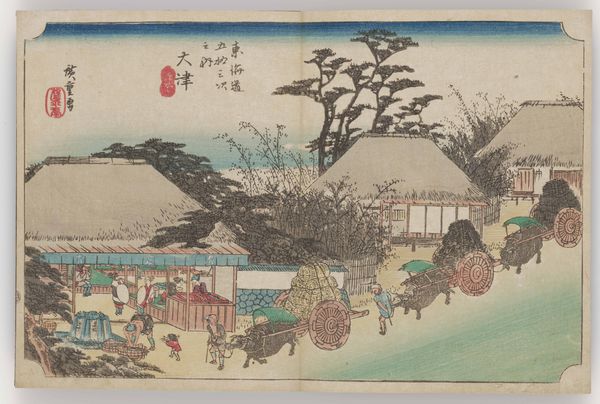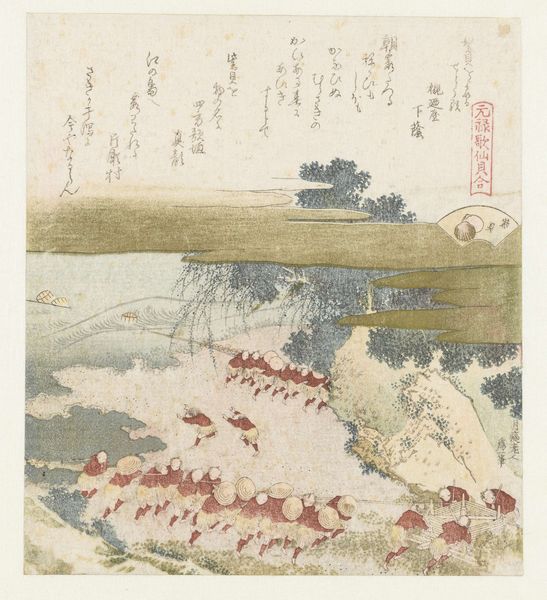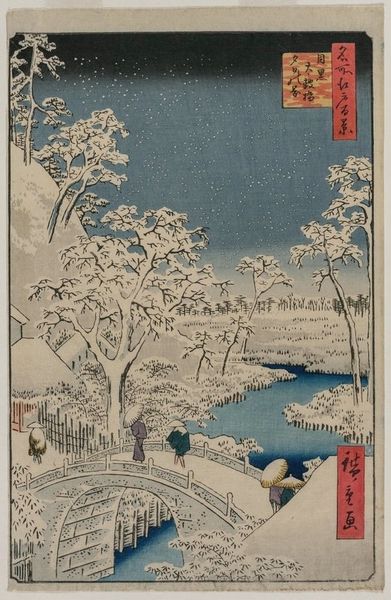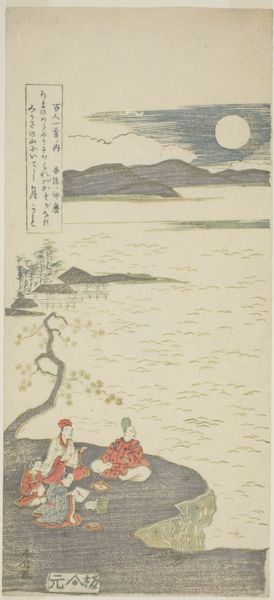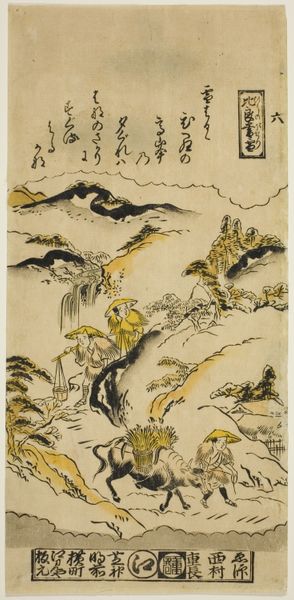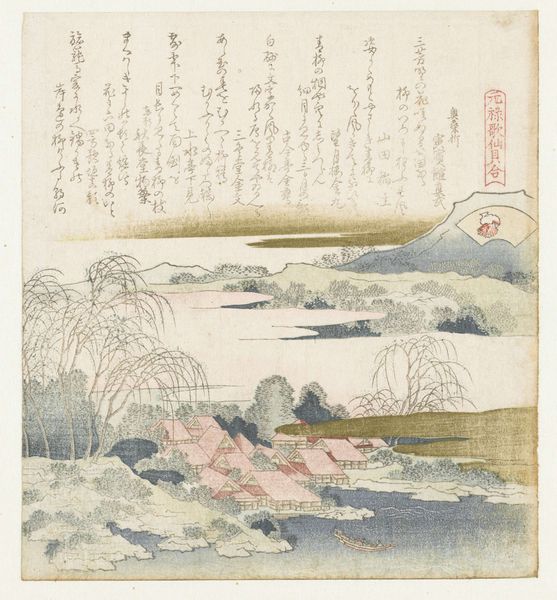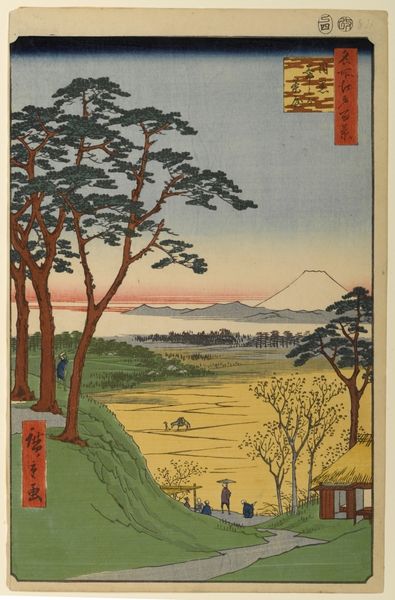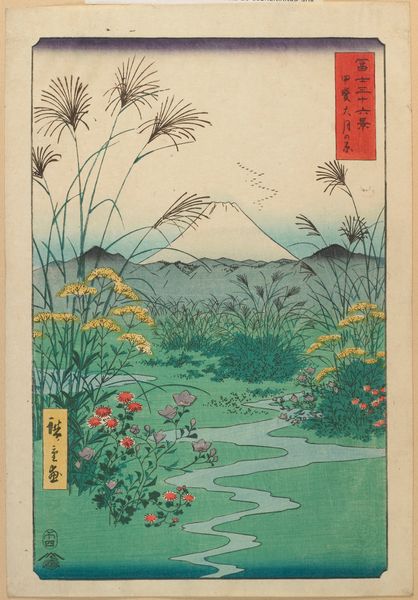
Empress Jito (Jito Tenno), from the series "One Hundred Poems by One Hundred Poets (Hyakunin isshu no uchi)" c. 1763 - 1764
0:00
0:00
print, woodblock-print
#
portrait
# print
#
asian-art
#
landscape
#
ukiyo-e
#
woodblock-print
Dimensions: 12 1/4 × 5 1/2 in.
Copyright: Public Domain
Curator: Before us is a woodblock print titled "Empress Jito, from the series One Hundred Poems by One Hundred Poets," crafted around 1763-1764 by Suzuki Harunobu. This piece currently resides at the Art Institute of Chicago. Editor: It’s remarkably delicate; the color palette feels like a muted whisper. The composition draws the eye immediately to the figure on the bridge, but the entire scene evokes such tranquility. Curator: Harunobu was a master of ukiyo-e, or "pictures of the floating world." He developed techniques to achieve these soft colors, involving layering the woodblocks during printing to create nuanced gradations. It is more than just aesthetic; it reflects the socio-economic context in which it was made. Consider the merchants who consumed these prints—it speaks to their aspirations of a refined lifestyle emulating the court. Editor: Precisely, the colors work together to create an intimate view, the subtle shades enhance the perspective of spatial depth. Curator: Absolutely. This print exemplifies the shift in the division of labour that came about, between the artists, the woodblock carvers and printers. A system that made artwork like this affordable and distributed on a scale rarely achieved previously. The very making of the piece becomes relevant to what the art is "saying." Editor: But also consider the formal elements: the line, the rendering of the figures, even the placement of the calligraphy…It's about perfect pictorial balance. Harunobu’s control is self-evident. The scene leads to this feeling. The vertical format emphasizes the height and contributes to the harmony within the woodblock. Curator: And one might also add that the content itself—a depiction of Empress Jito who was known as the Poet-Empress—participates in the social dynamics, offering glimpses into gendered societal roles. It's about the lives that were deemed worthy of representation. Editor: A beautiful observation, bringing together both aesthetic and social narratives in one piece of art. It really emphasizes just how relevant and layered are the prints coming from that period.
Comments
No comments
Be the first to comment and join the conversation on the ultimate creative platform.
